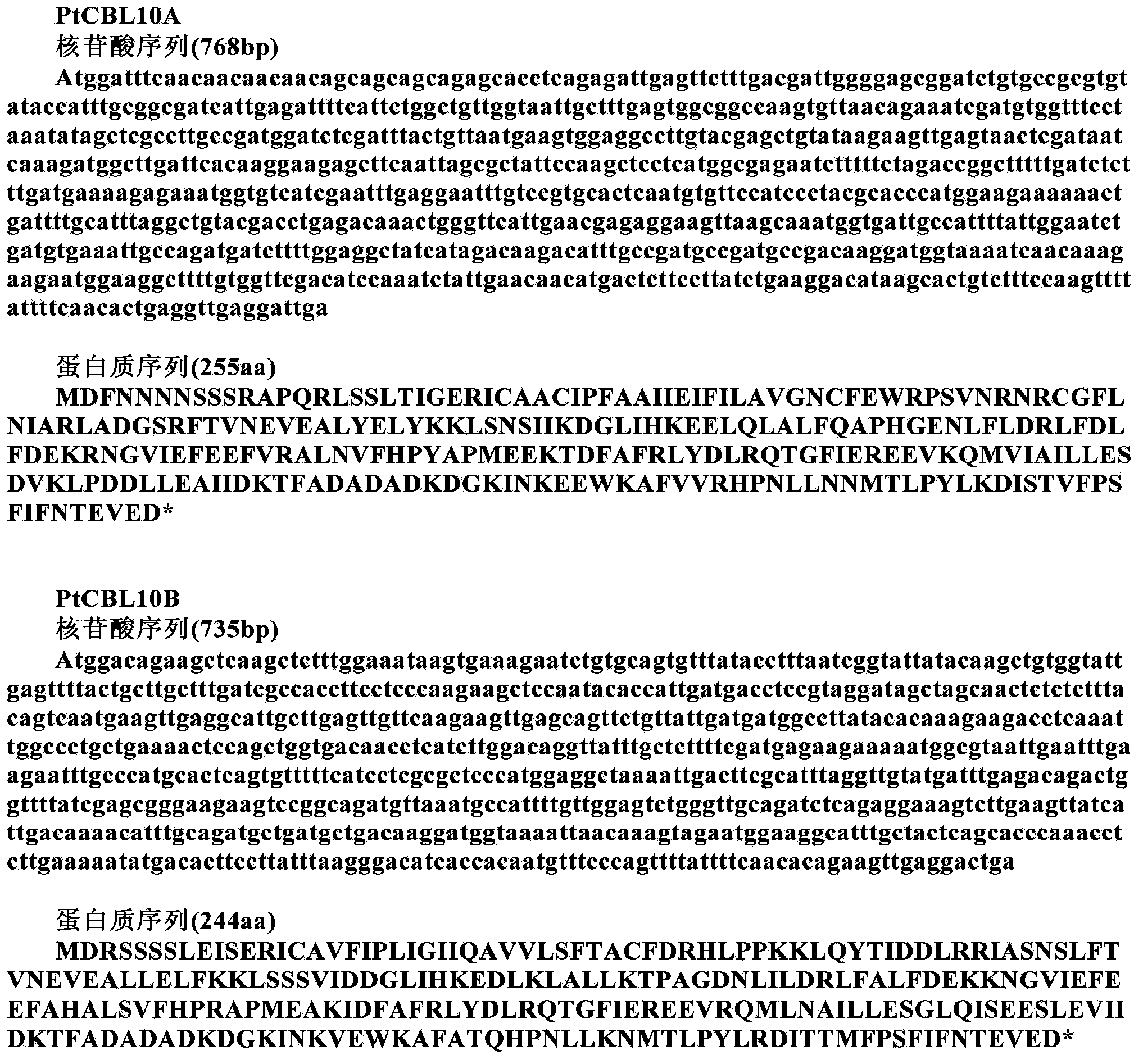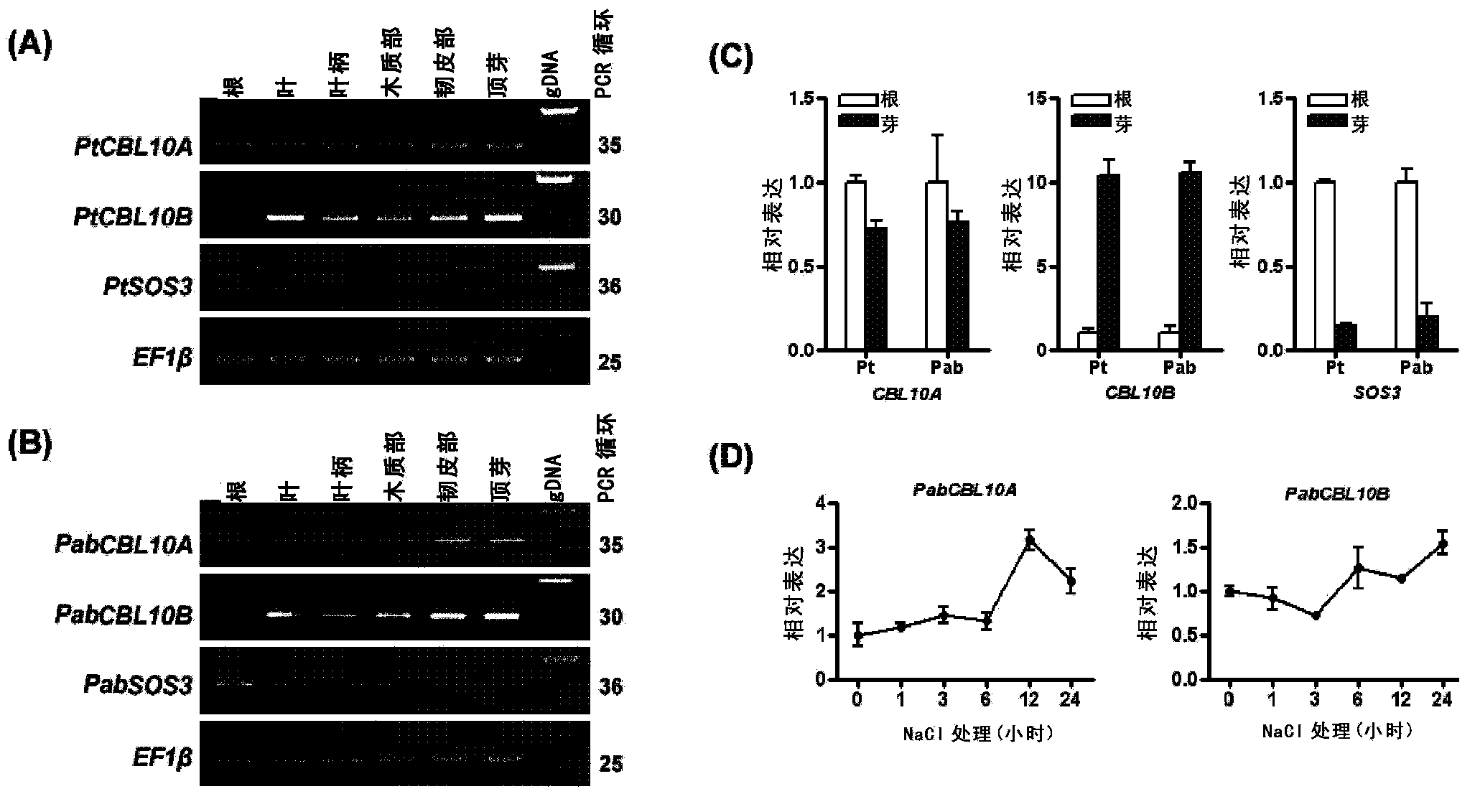Method for improving adversity resistance of plants
A plant, adversity technology, applied in the field of genetic technology and botany, can solve many problems such as
- Summary
- Abstract
- Description
- Claims
- Application Information
AI Technical Summary
Problems solved by technology
Method used
Image
Examples
Embodiment 1
[0105] Example 1, Discovery and sequence structure analysis of PtCBL10A and PtCBL10B
[0106] The inventors found two CBL10 genes in the poplar genome, named PtCBL10A and PtCBL10B. The full-length cDNAs of these two genes were obtained by PCR method, and the related sequences were confirmed by further sequencing.
[0107] Through protein amino acid sequence comparison, the inventors found that the N-terminals of PtCBL10A (SEQ ID NO: 2) and PtCBL10B (SEQ ID NO: 4) have about 40 more amino acids than PtSOS3, which contains a putative span Membrane domains, and they also have four basic EF hand motifs, which are the same as SOS3, such as Figure 1-2 .
Embodiment 2
[0108] Embodiment 2, expression pattern research
[0109] The present inventors determined the expression patterns of PtCBL10A and PtCBL10B by RT-PCR semi-quantitative method. The experimental results show that the expression intensity of PtCBL10A is relatively uniform in various tissues and organs, and the expression intensity is slightly stronger in the terminal bud; while PtCBL10B is mainly expressed strongly in the tissues of the aerial part, and the expression level in the root is less, which is consistent with the expression of PtSOS3. The opposite is true ( image 3 A), and the experimental results in two different varieties of Populus trichocarpa and Populus Yinzhong are consistent ( image 3 B).
[0110] In order to further confirm and quantify this result, the inventors conducted a real-time PCR experiment and found that the expression level of PtCBL10A in the root and the aerial part is indeed similar; the expression level of PtCBL10B in the aerial part is nearly ...
Embodiment 3
[0113] Embodiment 3, complementary experiment
[0114]The present inventors expressed PtCBL10A and PtCBL10B driven by the constitutive promoter 35S in the background of the Arabidopsis mutant cbl10, and the tolerance of the transgenic plants to salt stress basically returned to the level of wild-type plants, while the corresponding constitutive expression PtSOS3 was completely unable to complement the salt-sensitive phenotype of the cbl10 mutant ( Figure 4 ).
[0115] This experiment shows that the PtCBL10A and PtCBL10B proteins of poplar can improve the salt tolerance of plants.
PUM
 Login to View More
Login to View More Abstract
Description
Claims
Application Information
 Login to View More
Login to View More - R&D
- Intellectual Property
- Life Sciences
- Materials
- Tech Scout
- Unparalleled Data Quality
- Higher Quality Content
- 60% Fewer Hallucinations
Browse by: Latest US Patents, China's latest patents, Technical Efficacy Thesaurus, Application Domain, Technology Topic, Popular Technical Reports.
© 2025 PatSnap. All rights reserved.Legal|Privacy policy|Modern Slavery Act Transparency Statement|Sitemap|About US| Contact US: help@patsnap.com



